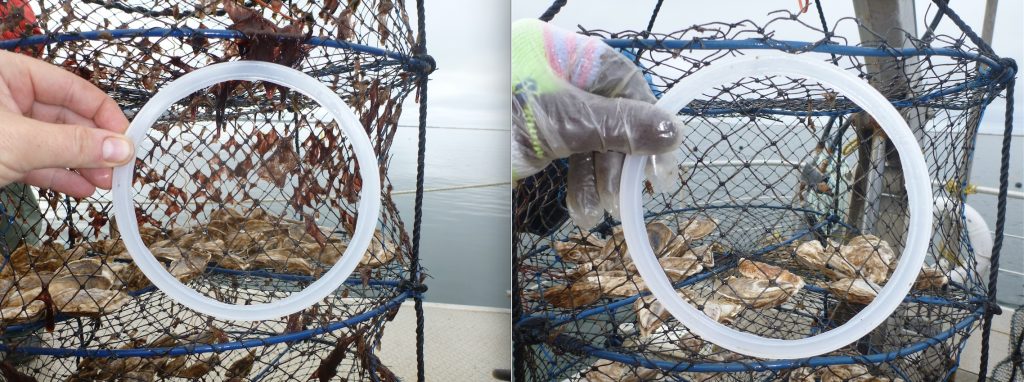
Study identifies non-toxic antifouling treatments
December 20, 2018
By Ruby Gonzalez
A silicon-based non-toxic antifouling coating provides a promising effective protection against biofouling on shellfish farm structures, a study says.
 Antifouling coating on nets provides effective protection against tunicates. The contrast is instantly visible between the treated (left) and untreated lantern nets after a month in the waters of Havre-aux-Maisons lagoon in Québec
Antifouling coating on nets provides effective protection against tunicates. The contrast is instantly visible between the treated (left) and untreated lantern nets after a month in the waters of Havre-aux-Maisons lagoon in Québec Biofouling is a major problem for shellfish farmers because it damages and compromises the buoyancy of structures and could suffocate and increase the stress levels of the shellfish.
“There are two types of treatments that exist for biofouling and both of them could be very expensive, accounting for 15 to 20 percent of total production costs,” said Dr Nicolas Toupoint, industrial researcher at the Center of Expertise in Mariculture at Merinov.
Preventive measures require frequent monitoring of the structure. Active measures call for mechanical or chemical cleaning.
At Aquaculture Canada 2018, Toupoint presented the study, Innovative Strategies for Biofouling in Shellfish Farming. It looked into non-biocide antifouling treatments for shellfish farms in the Magdalen Islands, located off the province of Quebec, Canada.
Tunicates, which appear in colonial or solitary forms, have been identified as invasive species. The trials, which were conducted a year apart, experimented on using Product A, a silicon-based coating with photoactive action (peroxide); and Product B, a fouling-release coating with physical action. They were deployed on Japanese lantern nets containing oysters (Crassostrea virginica) and giant scallops (Placopecten magellanicus). Complementary assays were also performed on several substrates, such as polyethylene, nylon and Vexar for nets or pvc for plates.
The performance of the products depends on the substrate and season. “The use of non-biocide coating could be interesting” he said. One formulation of Product A was very promising, particularly for hard substrates, Vexar PVC, in the summer by reducing nearly 80 percent of the biofouling covering. Product B showed positive short-term performance on polyethylene during autumn.
Also, trials performed with biological controllers (cleaners) showed that they could be a potential alternative treatment. “Maybe it will be applicable if there is an easy supply and also if we could valorize them,” he said.
No detrimental effect was observed on bivalves for every tested treatment. Oysters were also observed to achieve better growth during winter. Globally, more research and development is needed to transfer such technologies to the industry, and to limit invasive species propagation.





